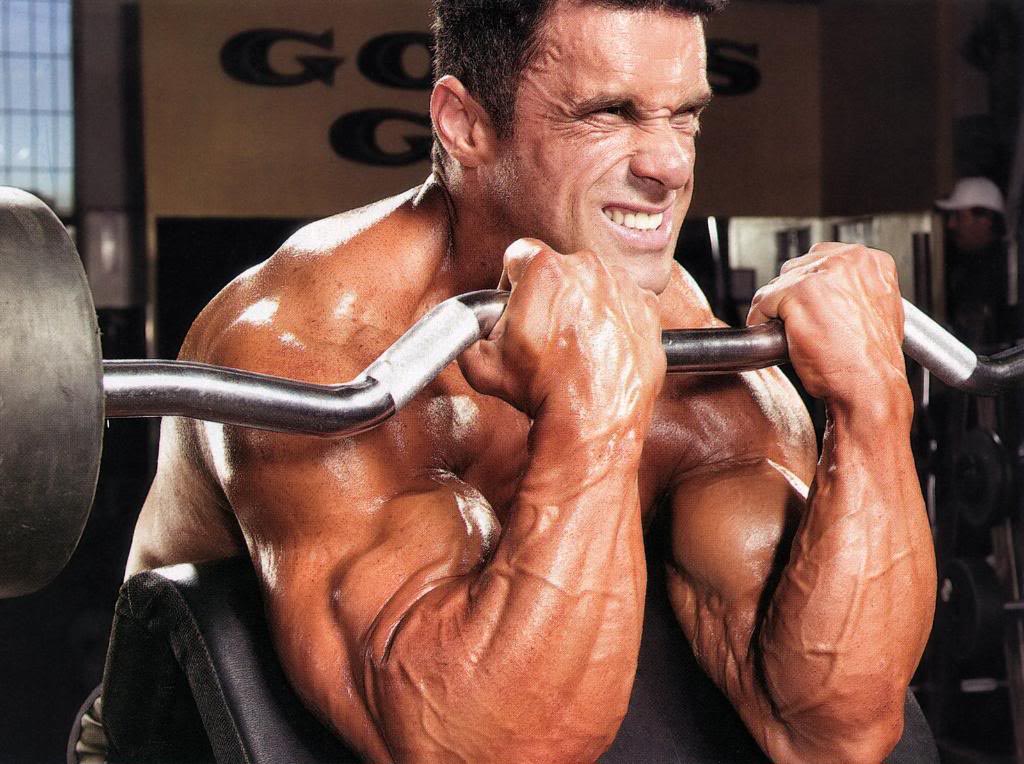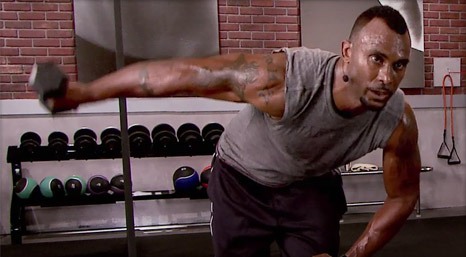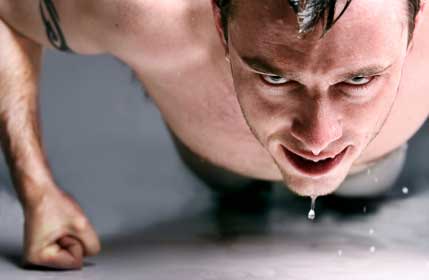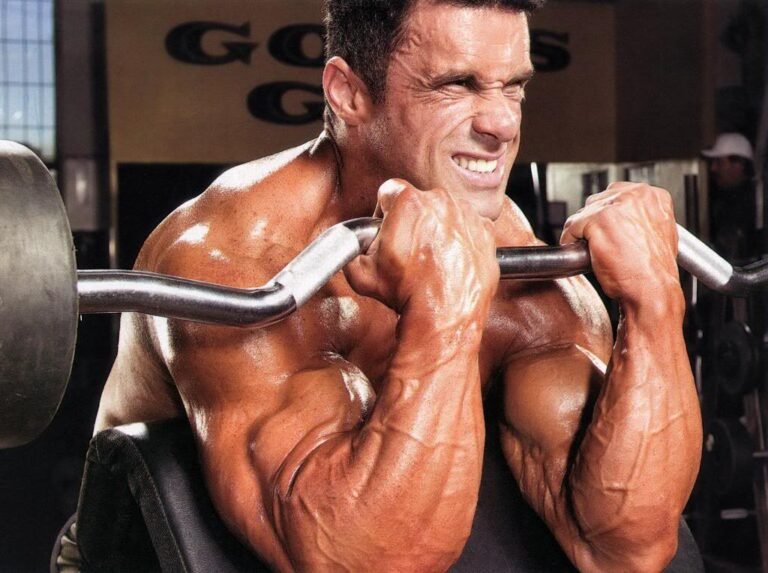
If you learn a little bit about human biology and muscles, you will be better prepared to increase your muscle size and strength.
Learn about the correct diet you should be following and how your muscles work, and you will find it easier to build your bicep workouts for men and triceps muscles.
The bicep muscle (biceps brachii) is a two-headed muscle that sits on the upper arm in between your elbow and your shoulder. The heads of the muscle form one muscle in the middle, which allows the muscle to twist (supinate) and pull (flex). The triceps muscle (Triceps brachii) is a three-headed muscle on the back of the arms that allow us to extend and straighten our arm.
Here’s 8 tips to build bigger biceps and triceps…

#1 Stretch After Every Set
Stretching will not make your muscles bigger in the long run (not stretching will), but it will make your muscles stronger and harder in the long run. It will also make your muscles more efficient, less likely to strain, and less likely to leave big saggy sacks when you lose your muscles in later life.
#2 Mix Up Your Workout Sets
with heavy sets and higher repetition sets. In layman’s terms, heavy sets make your muscles stronger, and faster sets increase your endurance. In one workout, you should try starting out with a few faster sets until you are sufficiently warmed up, and then move onto heavier working out. As you begin to tire, you should start returning to faster workout exercises before slowing down, stretching, and finishing.

#3 Do As Much Work On Your Triceps As You Do On Your Biceps
You should do this with all the muscles that you plan to build; otherwise, you will start to look out of proportion. Mixing up your routine every week may help to make working out other muscles a little less monotonous.
#4 Gradually Increase The Loads
that you use when you are doing your workout sets. Increase the loads over a period of time as you get stronger and fitter. Only increase up to a comfortable level and do not be afraid to decrease loads when you are having a rough week/month.

#5 Try Short And Fast Workouts
You could consider four fast ten-minute workouts per week, and one long one (or however you wish to do it). Or, you should workout once every fortnight and do quick ten-minute workouts every other day in order to keep your fitness level up. Government guidelines say that a fast and rigorous 20-minute workout every week may help keep you healthy, so a 10-minute workout every other day can only improve on that beginner workout routine.
#6 Work Out Your Upper Body On One Day
Wait 48 hours, and then work out your legs and big arms workout. It allows parts of your body to rest and build before you put more strain on them. It will also help you to get over any aches and pains, which are going to affect your workouts.
#7 Your Triceps Will Build Faster
than your biceps if you work with heavy loads. So if you are already pretty big in the bicep area, you should consider a few heavy floor presses, board presses, and dips.

#8 Work On Your Arms More Often
Your arms workout are only a small body part and therefore, can tolerate higher frequency workouts and more workouts than things such as your quads and other large body parts. Do not be afraid of working your arms more than your legs. Just be sure you do not do too much and push your body shape out of proportion.
Image: trainbodyandmind woman.thenest livestrong
Summary

Article Name
8 Tips to Build Bigger Biceps and Triceps
Description
If you learn a little bit about human biology and muscles, you will be better prepared to increase your muscle size and strength. Learn about the correct diet you should be following and how your muscles work, and you will find it easier to build your bicep workouts for men and triceps muscles.
Author
Terry Asher
Publisher Name
Gym Junkies
Publisher Logo

the title: “The Benefits of Mindful Eating for Overall Health”
In today’s fast-paced world, many of us find ourselves rushing through meals, eating on the go, or mindlessly snacking in front of the TV. However, there is a growing movement towards mindful eating, which involves paying full attention to the experience of eating and being present in the moment.
Mindful eating is not just a trend or a fad diet – it is a holistic approach to nourishing our bodies and cultivating a healthier relationship with food. By practicing mindful eating, we can reap a multitude of benefits for our overall health and well-being.
One of the key benefits of mindful eating is improved digestion. When we eat mindfully, we are more aware of our body’s signals of hunger and fullness, allowing us to eat until we are satisfied rather than overeating. This can help prevent digestive issues such as bloating, indigestion, and discomfort.
Mindful eating also promotes weight management. By slowing down and savoring each bite, we are more likely to recognize when we are full and avoid mindless overeating. This can lead to a healthier weight and better control over our eating habits.
In addition, mindful eating can help reduce stress and promote relaxation. By focusing on the present moment and fully experiencing the tastes and textures of our food, we can create a sense of calm and mindfulness that can carry over into other areas of our lives.
Furthermore, mindful eating can enhance our appreciation for food and the experience of eating. By being fully present during meals, we can savor the flavors, aromas, and textures of our food, leading to a greater enjoyment of the eating experience.
Overall, practicing mindful eating can have a positive impact on our physical, mental, and emotional well-being. By taking the time to savor and appreciate our meals, we can nourish our bodies, reduce stress, and cultivate a healthier relationship with food. So next time you sit down to eat, try to be more present and mindful – your body and mind will thank you for it.

